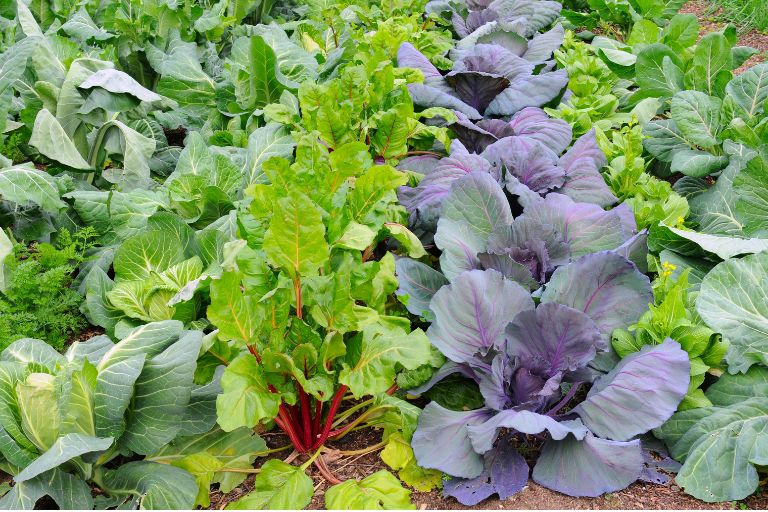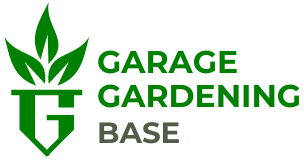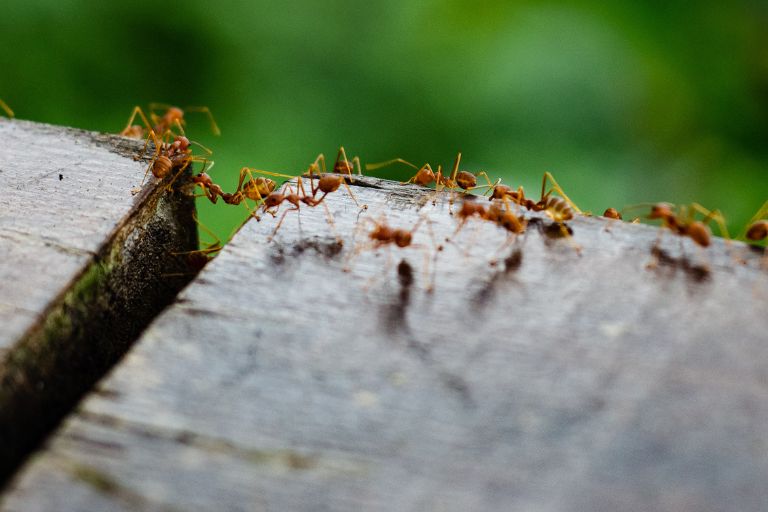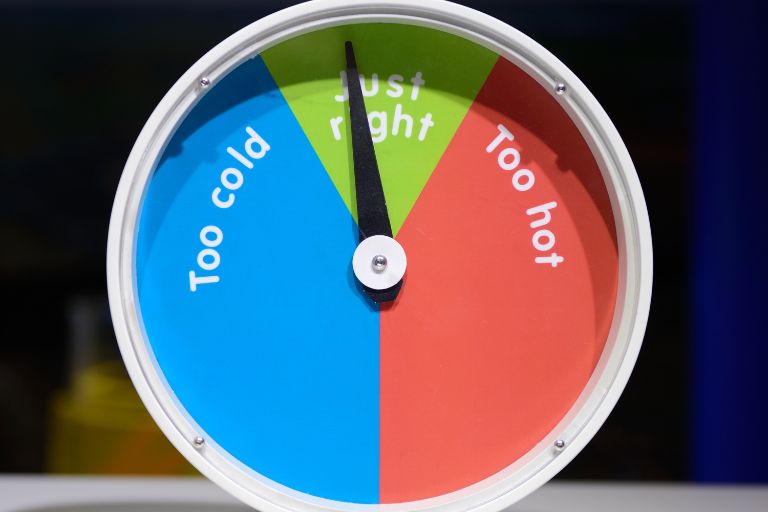Maximising Seasonal Gardening in Garage Setups: Tips and Tricks

Gardening has long been celebrated as a therapeutic and rewarding pursuit, but for those with limited outdoor space or facing environmental challenges, traditional gardening can seem out of reach. However, with creativity and ingenuity, even the most unlikely spaces can be transformed into thriving green sanctuaries. In this article, we venture into the realm of garage gardening, where the fusion of innovation and horticultural expertise unlocks the potential for year-round cultivation.
Often overlooked as mere storage or vehicle shelters, garages have untapped potential as viable gardening spaces. With the right approach, they can provide a controlled environment conducive to plant growth regardless of the season. Whether you’re a city dweller longing to reconnect with nature or an experienced gardener seeking new challenges, the garage offers a canvas for exploration and experimentation.
Throughout the seasons, garage gardening offers a unique set of opportunities and challenges. From the fresh beginnings of spring to the frosty depths of winter, each season requires careful planning and adaptation to ensure the success of your green endeavours. In this article, we take you on a journey through the seasons, offering insights, tips and practical advice to help you realise the full potential of your garage garden.
Understanding Seasonal Dynamics
Seasonal changes have a significant impact on garage gardening, affecting temperature, lighting and humidity levels, which in turn directly affect plant growth and health. Understanding these dynamics is crucial to successful garage gardening:
Temperature fluctuations
– During spring and summer, garage temperatures can soar, especially in regions with hot climates or inadequate ventilation. High temperatures can stress plants, affect their growth rates and even cause wilting or heat damage.
– Conversely, temperatures inside the garage can drop significantly in fall and winter, putting sensitive plants at risk of frost damage. Inadequate insulation or heating can exacerbate this problem, making it difficult to maintain optimum temperatures for plant growth.
Lighting changes
– The availability of natural light varies with the seasons, affecting photosynthesis and plant development. In spring and summer, longer daylight hours provide ample sunlight to promote robust growth and flowering. However, inadequate light penetration or shading from nearby structures can still be a problem.
– In fall and winter, daylight hours decrease, requiring supplemental lighting for indoor gardening. Artificial grow lights are essential for maintaining plant growth during these darker months, mimicking the spectrum and intensity of sunlight to ensure healthy plant development.
Humidity fluctuations
– Humidity levels in the garage can fluctuate with the seasons, affecting plant transpiration and susceptibility to pests and disease.
– Spring and summer often bring higher humidity levels, creating favourable conditions for fungal diseases and pest infestations. Proper ventilation and airflow management are essential to reduce humidity and prevent moisture-related problems.
– In contrast, fall and winter tend to be drier, which can lead to drought stress for plants. Humidifiers or misting systems may be needed to maintain adequate moisture levels, especially for plants that like moisture.
Managing these seasonal variations requires proactive measures and adaptation
– Installing temperature control devices such as heaters or fans to regulate indoor temperatures.
– Use shade cloth or reflective materials to manage excessive sunlight and prevent heat build-up.
– Use a combination of natural and artificial lighting systems to ensure consistent light levels.
– Monitor and adjust humidity levels using humidifiers, dehumidifiers or passive ventilation methods.
– Selecting plant species appropriate to the garage environment and adjusting horticultural practices accordingly.
Seasonal gardening is essential for optimum plant growth and productivity in the garage. Discover why:
Maximising natural cycles – Plants have evolved to thrive within specific seasonal cycles, with growth, flowering and fruiting patterns synchronised with changes in temperature, light and humidity. By aligning your gardening activities with these natural rhythms, you can harness the full potential of your plants, allowing them to grow and develop in harmony with their environment.
Efficient use of resources – Different seasons offer different environmental conditions that affect plant requirements. For example, plants have higher water and nutrient needs during periods of active growth in spring and summer, while they may require less water and fertilizer during dormancy in fall and winter. Tailoring gardening activities to seasonal needs optimises resource use, minimises waste and maximises efficiency.
Reduce environmental stress – Seasonal changes can expose plants to environmental stressors such as temperature extremes, changes in light availability, and moisture fluctuations. By timing garden tasks such as planting, pruning and fertilising, you can minimise stress on plants and increase their resilience to environmental challenges. For example, planting heat-tolerant varieties in summer or providing extra insulation for cold-sensitive plants in winter can help buffer against temperature extremes.
Improve pest and disease management – Pests and diseases often follow seasonal patterns, with certain species more prevalent at certain times of the year. By planning gardening activities around seasonal clues, you can implement proactive pest and disease management strategies tailored to prevailing conditions. For example, monitoring for signs of pest infestations or disease outbreaks and applying preventive measures at the appropriate times can help protect plant health and minimise crop losses.
Optimising harvest timing – Timing is crucial when harvesting fruits, vegetables and herbs for maximum flavour, quality and nutritional value. By understanding the seasonal growth patterns of your crops and harvesting them at the right stage of maturity, you can ensure optimal flavour and nutrition. In addition, timing harvests with seasonal abundance allows you to make the most of your garden’s bounty and minimise waste.
Spring Preparation
As spring approaches, preparing your garage space for gardening is essential for a successful growing season. Below is a comprehensive guide to getting your garage ready for spring gardening:
Clean and organise
– Start by cleaning and organising your garage. Remove any unnecessary items, tools or equipment to make room for your gardening supplies and plants.
– Sweep or vacuum the floors, remove cobwebs and wipe down surfaces to create a clean and tidy environment for gardening activities.
– Check for signs of pests or infestations and take appropriate action before introducing plants into the room.
Assess lighting conditions
– Evaluate the natural lighting conditions in your garage to determine how much sunlight reaches different areas throughout the day.
– Identify areas with direct sunlight for sun-loving plants and areas with partial or filtered sunlight for shade-tolerant varieties.
– Consider installing additional lighting fixtures or supplemental grow lights to provide adequate lighting for plants, especially in areas with limited natural light.
Prepare planting areas
– Determine the layout and configuration of your planting areas in the garage. Consider using shelving, tables or raised beds to maximise space and organisation.
– Ensure that planting containers or beds are clean and free of debris or contaminants. Sterilise pots and containers if necessary to prevent the spread of disease.
– Set up a dedicated potting station with essential gardening tools, potting soil and containers for transplanting seedlings or starting seeds indoors.
Ventilation and air circulation
– Evaluate your garage’s ventilation system to ensure adequate airflow and circulation. Proper ventilation helps regulate temperature and humidity levels, preventing the growth of mould and mildew.
– Install fans or open windows and doors regularly to promote air exchange and prevent stagnant air from building up, especially in warmer weather.
Temperature control
– Consider installing a thermostat-controlled heater or portable heater to maintain optimal temperatures for plant growth, especially during cool spring nights or early mornings.
– Monitor temperature fluctuations and adjust the heater settings as needed to maintain a comfortable environment for your plants.
Stock up on gardening supplies
– Stock up on essential gardening supplies such as seeds, potting mix, fertiliser and plant holders. Make sure all gardening tools are clean, sharp and in good working order.
– Organise your gardening supplies and equipment in designated storage areas in the garage for easy access and convenience.
Selecting and starting seeds for spring gardening in a garage environment requires careful consideration to ensure successful germination and healthy plant growth. Below are some tips to help you select and start seeds effectively:
Choose suitable varieties
– Choose plant varieties that are suitable for indoor or container gardening, taking into account factors such as space requirements, light preferences and growth habits.
– Choose compact or dwarf varieties of vegetables, herbs and flowers that will thrive in containers or confined spaces. Look for varieties labelled as suitable for growing indoors or in greenhouses.
Consider light requirements
– Choose seeds from plants that can tolerate or thrive in the light conditions available in your greenhouse. Some plants need full sun, while others thrive in partial shade.
– If your garage receives limited natural light, prioritise seeds of shade-tolerant plants or invest in additional grow lights to provide adequate lighting for seedlings.
Timing and sowing
– Consult a local planting calendar or gardening resource to determine the appropriate time to start seeds indoors in preparation for the spring growing season in your area.
– Start seeds indoors several weeks before the last expected frost date to give seedlings plenty of time to grow and develop before transplanting outdoors.
Seed starting supplies
– Gather all the necessary seed starting supplies, including seed trays, peat pots, seed starting mix, labels and a watering can or mister.
– Use a good quality sterile seed starting mix, specially formulated for seed germination, to provide the seeds with the ideal growing medium and prevent soil-borne diseases.
Seed starting techniques
– Follow seed packet instructions for depth, spacing and other specific requirements for each crop.
– Consider pre-germinating seeds for faster and more uniform germination. Pre-germination involves soaking seeds in water overnight or using a damp paper towel to encourage the early stages of germination before planting in soil.
– Keep seed trays or pots constantly moist but not soggy to ensure proper germination. Use a mist bottle or bottom watering method to avoid disturbing seeds and seedlings.
Provide optimum growing conditions
– Place seed trays or pots in a warm, well-lit area of the garage with consistent temperatures between 65°F and 75°F (18°C to 24°C) for optimal germination.
– Monitor moisture levels regularly and adjust watering as needed to prevent drying out or waterlogging of the seed mix.
– Once seedlings emerge, provide adequate airflow and ventilation to prevent dehydration and promote healthy growth.
As temperatures rise during the spring season, proper ventilation and effective pest control become increasingly important to maintaining a healthy and thriving garage garden. Below are some of the reasons why ventilation and pest control are so important at this time of year:
Temperature regulation
– Proper ventilation helps regulate the temperature inside the garage, preventing overheating and creating a more comfortable environment for plants.
– As temperatures rise, stagnant air can accumulate in enclosed spaces, leading to heat build-up and potentially causing stress or heat-related damage to plants.
– Good airflow and ventilation promotes air exchange, allowing cooler air to circulate and dissipate excess heat, helping to maintain optimal growing conditions for plants.
Humidity control
– Ventilation plays a key role in managing humidity levels in the greenhouse environment. High humidity levels can create favourable conditions for the growth of fungal diseases, mould and mildew, posing a threat to plant health.
– Adequate ventilation helps reduce humidity by promoting air movement and preventing moisture build-up, minimising the risk of fungal infections and other moisture-related problems.
Pest prevention and control
– Rising spring temperatures can coincide with increased pest activity as insects become more active and reproduce more quickly.
– Proper ventilation helps deter pests by creating less favourable conditions for their development and reproduction. Adequate airflow can also make it more difficult for pests to locate and attack plants.
– Implementing proactive pest management strategies, such as regularly inspecting plants for signs of pest damage, practicing good hygiene and using natural pest deterrents or organic pesticides, becomes essential as temperatures rise.
Disease prevention
– Good ventilation is essential to reduce the risk of fungal diseases such as powdery mildew and botrytis, which thrive in warm, humid environments.
– Circulating air helps to keep plant foliage dry, minimising the conditions that favour the germination of fungal spores and the spread of disease.
– Proper airflow also helps prevent the spread of airborne pathogens by dispersing them away from plants and reducing their concentration in the environment.
Improved plant growth and health
– Adequate ventilation contributes to overall plant health and vigour by promoting strong, robust growth and reducing the likelihood of stress-related problems.
– Proper airflow ensures that plants receive an adequate supply of carbon dioxide for photosynthesis, which is essential for healthy growth and development.
Summer Maintenance
During the summer months, managing the heat and humidity in a garage garden is essential to ensure the wellbeing of the plants. Below are some effective strategies for coping with summer conditions:
Use fans
– Install oscillating or stationary fans to help circulate air throughout the garage. Position fans strategically to ensure even distribution of air throughout the room.
– Fans help dissipate heat and reduce stagnant air pockets, preventing temperature build-up and improving overall air quality for plants.
Shade cloths
– Hang shade cloths or fabric covers over windows or openings to filter and diffuse sunlight and reduce the intensity of direct sunlight.
– Shade cloth can help prevent overheating and sunburn in sensitive plants, while maintaining adequate light levels for photosynthesis.
Proper ventilation
– Increase natural ventilation by opening windows, doors or vents during cooler times of the day, such as early morning or evening, to allow fresh air to enter and hot air to escape.
– Consider installing exhaust fans or roof vents to help remove hot, humid air from the garage. Ventilation systems help regulate temperature and humidity levels, creating a more comfortable environment for plants.
Insulation and heat management
– Improve insulation in the garage to minimise heat transfer from the outside. Seal gaps and cracks around doors, windows and walls to prevent heat infiltration.
– Use reflective materials or white paint on walls and ceilings to reduce heat absorption and reflect sunlight, helping to maintain cooler indoor temperatures.
Watering techniques
– Adjust watering frequency and timing to prevent the soil from drying out during hot summer days. Water plants early in the morning or late in the evening to minimise water loss through evaporation.
– Use mulching techniques to conserve soil moisture and regulate soil temperature. Apply a layer of organic mulch, such as compost or straw, around the base of plants to retain moisture and suppress weed growth.
Protect sensitive plants
– Move heat-sensitive plants to shaded areas or sheltered spots in the garage to protect them from direct sunlight and excessive heat.
– Group plants according to their temperature and humidity preferences, placing heat-loving plants together and moisture-loving plants in higher humidity areas.
Selecting heat-tolerant plant varieties is essential for maintaining a thriving indoor garden in a garage during the hot summer months. Below are some heat-tolerant plant options suitable for garage gardening:
Herbs
Basil (Ocimum basilicum) – This aromatic herb thrives in warm temperatures and can be grown indoors with adequate sunlight.
Rosemary (Rosmarinus officinalis) – Known for its strong flavour and fragrance, rosemary is a hardy perennial that tolerates heat well.
Leafy Greens
Swiss chard (Beta vulgaris) – Swiss chard is a heat-tolerant leafy green that is rich in nutrients. It can be grown in containers or in raised beds in the garage.
Arugula (Eruca vesicaria) – Arugula is a fast-growing salad green that does well in warm temperatures. It can be harvested continuously for a steady supply of fresh greens.
Peppers
Chillies (Capsicum annuum) – Many varieties of chillies, such as jalapeños, cayenne and habaneros, are heat-loving plants that thrive in warm conditions. They can be grown in containers and produce vibrant, hot fruit.
Bell peppers (Capsicum annuum) – Bell peppers are another heat-tolerant option that can be grown in the greenhouse. They come in a variety of colours and are versatile for cooking.
Tomatoes
Cherry tomatoes (Solanum lycopersicum var. cerasiforme) – Cherry tomato varieties, such as Sweet 100 or Sungold, are good for home gardening. They produce small, sweet fruit and adapt well to container growing.
Determinate tomato varieties – Some determinate tomato varieties, such as Roma or Patio, are compact and heat-tolerant, making them suitable for growing in containers or small spaces.
Succulents and cacti
Aloe Vera (Aloe barbadensis miller) – Aloe vera is a succulent plant prized for its medicinal properties and its ability to thrive in dry, warm conditions. It requires minimal watering and can be grown indoors in containers.
Snake Plant (Sansevieria trifasciata) – Snake plants are low-maintenance succulents that tolerate heat and low light, making them ideal for garage gardening.
Tropical plants
Bird of Paradise (Strelitzia reginae) – Bird of Paradise is a striking tropical plant with bright, bird-like flowers. It tolerates warm temperatures and partial shade, making it suitable for indoor cultivation.
Croton (Codiaeum variegatum) – Croton is a colourful tropical plant known for its variegated foliage. It thrives in warm, humid conditions and adds a splash of colour to interiors.
During the summer months, garage gardens are susceptible to various pests and diseases due to the warm temperatures and high humidity. Below are some common pests and diseases to watch out for, along with organic methods to effectively control them:
Aphids
– Aphids are small, sap-sucking insects that can damage a wide range of plants by weakening them and carrying diseases.
– Organic control: Use insecticidal soap or neem oil spray to smother and repel aphids. Introduce natural predators such as ladybirds or lacewings to keep aphid populations in check.
Whiteflies
– Whiteflies are tiny, white-winged insects that feed on plant sap and can cause yellowing of leaves, stunted growth and the spread of viral diseases.
– Organic control: Apply insecticidal soap or neem oil spray to target whiteflies on foliage. Use yellow sticky traps to catch adult whiteflies and reduce their numbers.
Spider mites
– Spider mites are microscopic pests that feed on plant sap and cause spots, discolouration and webbing on leaves.
– Organic control: Spray affected plants with a strong stream of water to dislodge spider mites from the foliage. Apply insecticidal soap or neem oil spray to suffocate and kill spider mites. Introduce predatory mites or insects such as ladybirds to prey on spider mites.
Fungal diseases (e.g. powdery mildew, botrytis)
– Fungal diseases thrive in warm, humid conditions and can affect plant foliage, stems and fruit, causing leaf spots, mould growth and rot.
– Organic control: Remove and destroy affected plant parts to prevent the spread of fungal spores. Apply a solution of baking soda and water or a mixture of milk and water to affected plants as a natural fungicide. Improve air circulation and reduce humidity to create less favourable conditions for fungal growth.
Bacterial diseases (e.g. bacterial leaf spot, bacterial blight)
– Bacterial diseases can cause symptoms such as leaf spot, wilting and stem rot in plants, leading to reduced vigour and yield.
– Biological control: Practice good hygiene by promptly removing and disposing of infected plant material. Use copper-based fungicides or biocontrol agents containing beneficial bacteria to suppress bacterial pathogens. Avoid overhead watering to minimise the spread of bacterial diseases.
Slugs and snails
– Slugs and snails are nocturnal pests that feed on plant leaves, stems and fruit, leaving trails of slime and ragged edges on foliage.
– Biological control: Set up beer traps or shallow containers filled with beer to attract and drown slugs and snails. Place copper barriers or diatomaceous earth around plants to create physical barriers that deter slugs and snails.

Fall Harvesting and Transition
As fall approaches and temperatures start to drop and daylight hours diminish, it’s important to plan for harvesting from your garage garden before the colder weather sets in. Below are some tips to help you make the most of your harvest and prepare your garden for the change of season:
Monitor crop maturity
– Keep a close eye on your crops as they approach maturity. Look for signs of ripeness, such as changes in colour, size or texture of fruits and vegetables.
– Harvest crops promptly when they reach peak ripeness to ensure optimal flavour, texture and nutritional value.
Harvesting techniques
– Use appropriate harvesting techniques for different types of crops. For example, use pruning shears or scissors for leafy greens and herbs, and a sharp knife or scissors for fruits and vegetables.
– Handle harvested produce with care to avoid bruising or damage, which can reduce shelf life and quality.
Extend the harvest season
– Consider staggering or succession planting to extend the harvest season and prolong the availability of fresh produce from your garden.
– Harvest crops selectively, starting with those that are ripest or most susceptible to cold damage, while leaving others to ripen for later harvests.
Cold tolerant crops
– Prioritise harvesting cold-tolerant crops that can withstand cooler temperatures and frost, such as root vegetables (e.g. carrots, beets, radishes), brassicas (e.g. kale, cabbage, broccoli) and certain herbs (e.g. parsley, coriander).
– Leave cold-tolerant crops in the ground as long as possible, as they can often withstand light frosts and improve in flavour when exposed to cooler temperatures.
Storage and preservation
– Properly store harvested produce to extend shelf life and maintain freshness. Use cool, dry storage areas such as root cellars, refrigerators or coolers to store fruits, vegetables and herbs.
– Consider preserving excess harvests through methods such as canning, freezing, drying, or fermenting to enjoy homegrown produce throughout the winter months.
Prepare for the transition
– Begin transitioning your garden for the fall and winter seasons by removing spent plants, cleaning up debris, and preparing the soil for planting cool-season crops.
– Incorporate organic matter such as compost or aged manure into the soil to improve its structure and fertility for future plantings.
Preserving harvested produce is a rewarding way to enjoy the bounty of your garage garden well beyond the growing season. Below are tips for preserving harvested produce by canning, freezing and drying:
Canning
– Canning is a popular method of preserving fruit, vegetables and sauces in jars, using heat to kill bacteria and create a vacuum seal.
– Choose good quality jars with new lids and bands to ensure a good seal. Wash jars, lids and bands in hot, soapy water and sterilise by boiling for 10 minutes before filling.
– Follow tested and approved canning recipes from reliable sources, such as the USDA Complete Guide to Home Canning or reputable canning websites and books.
– Use a water bath canner for acidic foods such as fruit, pickles and tomato-based sauces, and a pressure canner for low-acid foods such as vegetables, meats and soups.
– Process filled jars for the recommended time and pressure for the specific food and altitude to ensure safe preservation and shelf life.
Freezing
– Freezing is an easy and versatile way to preserve a wide variety of fruits, vegetables, herbs and prepared foods.
– Select produce at its peak ripeness and freshness, wash thoroughly and remove stems, cores or seeds if necessary.
– Blanch vegetables by briefly immersing them in boiling water, then plunging them into ice water to stop the cooking process. Blanching helps retain colour, flavour and texture while inhibiting enzyme activity.
– Pack prepared produce in freezer-safe containers or bags, removing excess air to minimise freezer burn. Label containers with contents and freezing date.
– Place filled containers in the freezer immediately to maintain optimal freshness and quality. Use a freezer or chest freezer for longer-term storage of frozen produce.
Drying
– Drying or dehydrating is a traditional method of preserving fruit, vegetables, herbs and meat by removing moisture to prevent spoilage.
– Select fresh, ripe produce and herbs, and wash and prepare as necessary. Slice fruit and vegetables evenly for even drying and remove seeds, pits or stems as necessary.
– Place prepared produce in a single layer on drying trays or racks, ensuring adequate air circulation for even drying. Use a food dehydrator or oven set at a low temperature for drying.
– Dry fruit and vegetables until leathery or crisp and herbs until brittle, checking regularly for doneness.
– Store dried produce in airtight containers or jars in a cool, dry, dark place to preserve quality and flavour. Label containers with the contents and date of drying.
As fall approaches and temperatures begin to drop, it’s important to transition your garage garden to cool-season crops and prepare for winter conditions. Here’s how to manage this transition effectively:
Assess your garden
– Evaluate the current state of your garage garden, taking stock of existing plants, soil conditions and any remaining summer crops. Determine which plants are ready for harvest and which need to be removed or replaced.
Remove spent summer crops
– Remove any spent or diseased plants from your beds or containers to make room for cool-season crops. Remove plant debris and weeds to minimise the risk of pests and diseases.
Amend soil and add compost
– Prepare the soil for planting cool-season crops by amending it with organic matter such as compost, aged manure or composted leaves. Work the amendments into the soil to improve its structure, fertility and water-holding capacity.
Choose cool season crops
– Choose cool-season crops that thrive in cooler temperatures and shorter daylight hours. Popular options include leafy greens (e.g. lettuce, spinach, kale), root vegetables (e.g. carrots, beets, radishes), brassicas (e.g. broccoli, cabbage, cauliflower) and herbs (e.g. parsley, coriander, chives).
– Consider planting varieties bred specifically for fall and winter harvests, which are better adapted to lower light levels and cooler temperatures.
Planting Cool Season Crops
– Plant cool season crops according to their specific spacing and planting requirements, following planting guides or seed packets for guidance.
– Protect newly planted seedlings from frost and cold winds by using row covers, cloches or cold frames.
Mulch and insulate
– Apply a layer of organic mulch, such as straw, shredded leaves or compost, around newly planted crops to conserve soil moisture, regulate soil temperature and suppress weed growth.
– Insulate sensitive plants or containers by wrapping them in frost blankets or bubble wrap for extra protection against freezing temperatures.
Adjust watering and maintenance
– Adjust your watering schedule to account for cooler temperatures and reduced evaporation rates. Water plants deeply and less frequently to encourage deep root growth and prevent waterlogged soil.
– Monitor plants regularly for signs of stress, pest infestation or nutrient deficiencies, and take appropriate action to address any problems promptly.
Provide extra lighting
– As daylight hours decrease in fall and winter, supplement natural light with artificial grow lights to provide adequate lighting for indoor gardening. Position grow lights close to the plants and adjust the duration and intensity of the light as needed.
Winter Care
Maintaining an active garage garden in winter requires careful attention to the special needs of cold-hardy plants and the provision of supplementary lighting to compensate for reduced daylight hours. Below you’ll find out how to ensure the success of your garage garden during the winter months:
Choose cold-hardy plants
– Choose cold-hardy plants that can withstand lower temperatures and thrive indoors. Examples include leafy greens (e.g. kale, spinach, lettuce), root vegetables (e.g. carrots, beets, turnips), brassicas (e.g. broccoli, cauliflower, Brussels sprouts) and herbs (e.g. parsley, coriander, chives).
– Look for varieties that have been bred specifically for winter gardening or adapted for growing indoors in containers or raised beds.
Optimise growing conditions
– Provide adequate insulation to maintain stable temperatures in the greenhouse, especially during extreme cold spells. Use bubble wrap, frost blankets or insulated covers to protect plants from freezing temperatures and cold drafts.
– Ensure proper ventilation and airflow to prevent stagnant air and moisture build-up, which can lead to fungal disease and pest infestations. Use fans or open windows regularly to promote air exchange.
Supplemental lighting
– Install full-spectrum LED grow lights to provide supplemental lighting for plants during the shorter daylight hours of winter. Position grow lights close to plants and adjust their height and intensity according to the specific light requirements of different crops.
– Mimic natural daylight cycles by setting timers to control the duration and timing of artificial lighting. Aim for 12-16 hours of light per day for most plants, adjusting as needed based on plant response and growth.
Monitor temperature and humidity
– Use a thermometer to monitor temperatures in the garage and ensure they remain within the optimum range for plant growth. Provide additional heat sources such as space heaters or heating mats to maintain consistent temperatures, especially during colder periods.
– Use a hygrometer to measure humidity levels and prevent excessively dry or humid conditions. Consider using humidifiers or misting systems to increase humidity as needed, especially in heated indoor environments.
Watering and nutrition
– Adjust your watering schedule to account for lower evaporation rates and reduced plant growth during the winter months. Water plants thoroughly but less frequently, allowing the soil to dry slightly between waterings.
– Continue to feed plants with a balanced liquid fertiliser or organic compost tea at a reduced rate to provide essential nutrients for healthy growth and development.
Pest and disease management
– Monitor plants regularly for signs of pest infestation or disease outbreaks, as indoor environments can be more conducive to certain pests and pathogens during the winter.
– Practice good hygiene by removing fallen leaves, debris and dead plant material to reduce hiding places and breeding grounds for pests and diseases. Consider using organic pest control methods such as neem oil, insecticidal soap or beneficial insects to manage pest populations.
Maximising space in a garage garden during the winter months is essential to optimise plant growth and productivity. Below are some creative ideas for making the most of limited space:
Vertical gardening
– Make the most of vertical space by installing vertical gardening systems such as trellises, wall planters or hanging baskets. Train vining plants such as tomatoes, cucumbers or peas to grow vertically, saving valuable floor space while maximising sunlight.
– Consider using stackable planters or tiered shelving to create vertical growing areas for herbs, leafy greens and compact vegetables. Arrange plants according to their light requirements, with taller plants in the back and shorter plants in the front for optimal sun exposure.
Grow tents
– Set up grow tents or grow rooms in the garage to create a controlled environment for indoor gardening. Grow tents provide a convenient and customisable solution for optimising light, temperature and humidity levels for plant growth.
– Choose Grow Tents with reflective interiors to maximise light distribution and improve plant growth efficiency. Equip growers with adjustable ventilation systems, exhaust fans and carbon filters to regulate airflow and maintain optimum growing conditions.
– Use propagators to grow a wide variety of crops year-round, including herbs, vegetables, fruit and flowering plants. Customise the layout and configuration of Grow Tents to suit different plant sizes and growth stages.
Container gardening
– Use containers of different sizes and shapes to grow plants in small spaces. Choose compact or dwarf varieties of vegetables, herbs and flowers that grow well in containers.
– Arrange containers strategically on shelves, tables or racks to make the most of available space. Consider using rolling plant stands or trolleys to easily move plants for better sunlight or airflow.
– Group containers according to water and light requirements, grouping sun-loving plants in sunny spots and shade-tolerant plants in shady areas.
Hydroponic systems
– Explore hydroponic gardening as a space-saving alternative to traditional soil-based gardening. Hydroponic systems use nutrient-rich water solutions to grow plants without soil, allowing compact and efficient plant growth in small spaces.
– Set up hydroponic systems such as deep water culture, nutrient film technique or vertical hydroponic towers in your garage to grow a wide range of crops, including leafy greens, herbs and strawberries.
– Choose space-saving vertical hydroponic towers or wall-mounted hydroponic panels to maximise growing area while minimising floor space. Customise hydroponic setups with adjustable lighting, nutrient delivery systems and monitoring devices for optimal plant health and productivity.
Microgreen and sprout gardening
– Explore microgreen and sprout gardening as a space-efficient way to grow nutrient-rich greens indoors. Microgreens and sprouts can be grown in shallow trays or containers and harvested within a few weeks, making them ideal for small spaces and quick harvests.
– Set up a dedicated microgreen station with several trays or shallow containers filled with soil or growing medium. Grow a variety of microgreens such as kale, rocket, radish and sunflower for fresh and nutritious greens all year round.
– Rotate the trays regularly to ensure even growth and to give the plants plenty of light. Harvest microgreens when they reach the desired size, usually within 1-3 weeks of sowing.
During the winter months, protecting plants from frost damage is essential to maintaining the health and vitality of your garage garden. Insulation and temperature regulation play a crucial role in protecting plants from the damaging effects of freezing temperatures. Read on to find out why they’re so important:
Prevent frost damage
– Frost occurs when temperatures drop below freezing (0°C or 32°F), causing water in plant cells to freeze and expand, resulting in cell damage and tissue death.
– Insulation helps to create a barrier between plants and external cold temperatures, reducing the rate of heat loss and minimising the risk of frost damage to sensitive plant tissues.
Maintain optimum temperature
– Consistent temperature control is essential to ensure that plants remain within their optimum temperature range for growth and development.
– Fluctuating temperatures can stress plants and weaken their resistance to frost damage. Proper insulation helps to stabilise temperatures, providing a more favourable environment for plant growth.
Protect roots and shoots
– Insulation protects both above-ground plant parts (such as leaves, stems and flowers) and below-ground plant parts (such as roots) from freezing temperatures.
– Cold temperatures can cause root damage, inhibiting nutrient uptake and water absorption, which can affect overall plant health and vigour.
Minimise temperature fluctuations
– Temperature differences within the garage garden can occur due to factors such as proximity to doors, windows or heating sources. Insulation helps to distribute heat more evenly throughout the room, minimising temperature fluctuations.
– Consistent temperatures are particularly important for tropical or heat-loving plants that are sensitive to cold shocks and temperature fluctuations.
Maintaining microclimates
– Microclimates within the garage garden, such as areas near windows or doors, can experience different levels of temperature and humidity. Insulation helps to maintain microclimates and create more stable growing conditions for plants.
– By strategically placing plants in areas with favourable microclimates and providing insulation, you can optimise growing conditions and protect plants from frost damage.
Optimise heating efficiency
– Insulation improves the efficiency of heating sources within the garage, reducing energy consumption and heating costs. – By minimising heat loss through walls, ceilings and floors, insulation helps maintain warmer temperatures for plants without overloading heating systems.
Maintenance and Troubleshooting
Regular maintenance is vital for the health, vitality and productivity of plants in a garage garden, especially during the winter months when environmental conditions can be challenging. That’s why consistent maintenance is essential:
Pruning
– Pruning helps maintain plant health by removing dead, diseased or damaged branches that can harbour pests and diseases and inhibit new growth.
– Regular pruning encourages the development of strong, well-branched plants with improved air circulation and light penetration, reducing the risk of fungal disease and promoting overall plant vitality.
Fertilise
– Fertilising provides essential nutrients that plants need to grow, flower and fruit, especially in indoor environments where nutrient availability may be limited.
– Regular fertilization ensures that plants have access to adequate levels of nitrogen, phosphorus, potassium and micronutrients to promote healthy foliage, root development and reproductive growth.
Monitoring for signs of stress or disease
– Regular monitoring allows gardeners to detect early signs of stress, nutrient deficiencies, pest infestations or disease outbreaks before they escalate into serious problems.
– Early identification and intervention can help prevent the spread of pests and disease, minimise damage to plants and maintain the overall health of the garden.
Watering
– Consistent watering is essential to ensure plants receive adequate moisture, especially indoors where water may evaporate more quickly or be less available.
– Regularly monitoring soil moisture levels and adjusting the frequency and amount of watering as needed will help prevent under- or over-watering, which can lead to stress, wilting or root rot.
Weeding
– Regular weeding helps reduce competition for water, nutrients and light, allowing crops to thrive and outcompete weeds.
– Removing weeds also helps to maintain a clean and tidy garden environment, reducing hiding places for pests and minimising the risk of disease transmission.
Pest and disease management
– Regularly inspecting plants for signs of pest damage, such as chewed leaves, holes or discolouration, allows early intervention to prevent pest outbreaks.
– Implementing integrated pest management (IPM) strategies, such as physical barriers, biological controls or selective use of organic pesticides, helps manage pest populations while minimising harm to beneficial organisms and the environment.
Troubleshooting common garage gardening challenges such as nutrient deficiencies, overwatering and inadequate lighting is crucial to maintaining the health and vitality of your plants. Below are some troubleshooting tips to address these issues:
Nutrient deficiencies
Identifying symptoms – Look for visual clues such as yellowing leaves, stunted growth or leaf discolouration that may indicate specific nutrient deficiencies. For example, yellowing between leaf veins may indicate nitrogen deficiency, while yellowing around leaf margins may indicate potassium deficiency.
Solution – Correct nutrient deficiencies by feeding plants a balanced, water-soluble fertilizer or organic amendments rich in the deficient nutrients. Follow recommended application rates and frequency to avoid over-fertilising, which can lead to nutrient imbalances or fertiliser burn.
Overwatering
Identifying symptoms – Signs of overwatering include wilting despite moist soil, yellowing or browning of leaves and root rot. Check soil moisture by sticking a finger into the soil; if it feels excessively wet or waterlogged, the plant may be suffering from overwatering.
Solution – Allow the soil to dry out between waterings to prevent waterlogging and promote root health. Adjust your watering frequency and volume accordingly, taking into account factors such as plant type, container size and environmental conditions.
Inadequate lighting
Identifying symptoms – Plants grown in inadequate lighting may show symptoms such as leggy growth, pale or yellowing leaves, or poor flowering or fruiting. Plants may also lean or stretch towards the light source in an attempt to capture more light.
Solution – Increase the amount of light available to plants by supplementing natural light with artificial grow lights. Position grow lights close to plants and adjust their intensity and duration to provide sufficient illumination for optimal plant growth. Consider using full-spectrum LED grow lights for balanced light wavelengths that promote photosynthesis.
Pests and diseases
Identifying symptoms – Look for signs of pest infestation such as chewed leaves, holes, sticky residue or visible insects. Symptoms of disease may include spots, lesions, mould or wilting. Monitor plants regularly for any changes in appearance or behaviour.
Solution – Use integrated pest management (IPM) techniques to control pest and disease outbreaks. This may include removing affected plant parts, introducing natural predators, using organic pesticides or fungicides, and improving cultural practices such as sanitation and ventilation to prevent future infestations.
Temperature Fluctuations
Identifying symptoms – Plants may show signs of stress in response to temperature changes, such as wilting, leaf curling or leaf drop. Extreme temperatures can also damage plant tissue or inhibit growth.
Solution – Insulate the garage to stabilise temperature fluctuations and maintain a more consistent growing environment. Use insulating materials such as bubble wrap, frost blankets or insulated covers to protect plants from cold drafts or heat loss. Consider using heaters or fans to regulate temperatures and improve airflow as needed.
Garage gardening offers a unique opportunity to grow plants all year round in a controlled indoor environment. However, maintaining a successful garage garden requires careful attention to a number of factors including temperature control, lighting, irrigation and nutrient management. By implementing the tips and troubleshooting strategies discussed, gardeners can overcome common challenges such as nutrient deficiencies, overwatering, inadequate lighting and temperature fluctuations.
Regular maintenance, including pruning, fertilising and monitoring for signs of stress or disease, is essential to promote plant health and productivity. In addition, thoughtful planning and the use of space-saving techniques such as vertical gardening, grow tents and container gardening can maximise space efficiency and optimise growing conditions in the garage.






